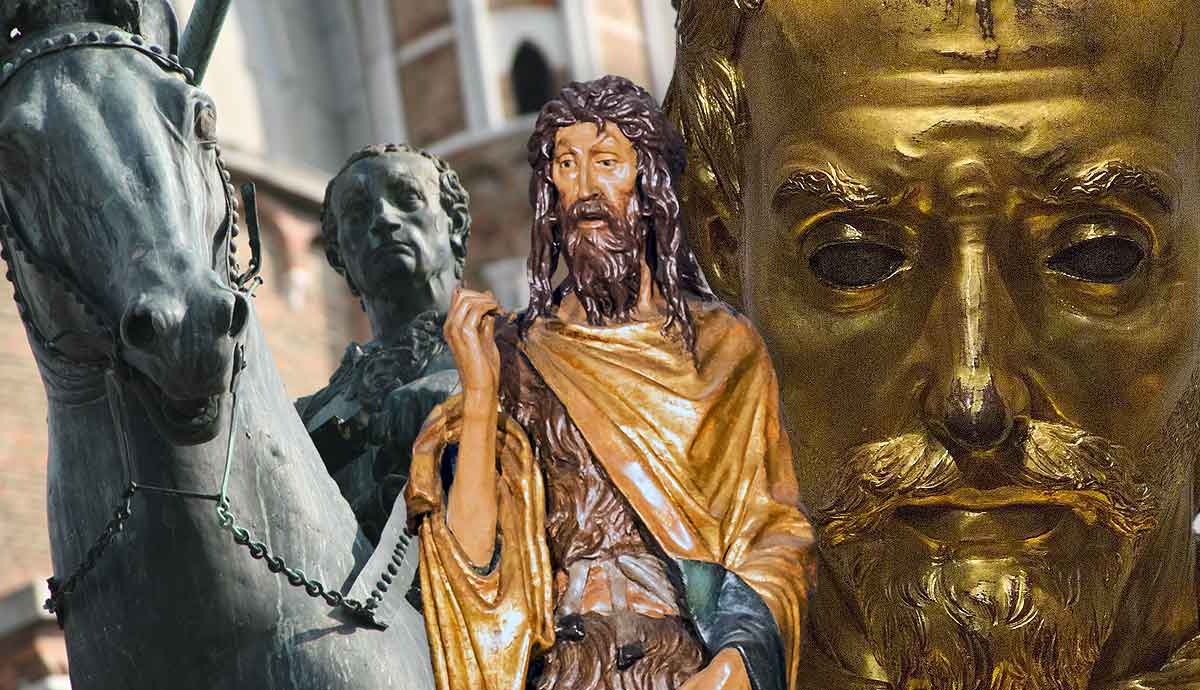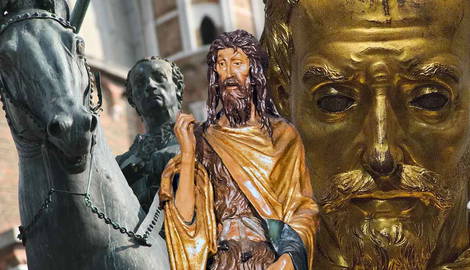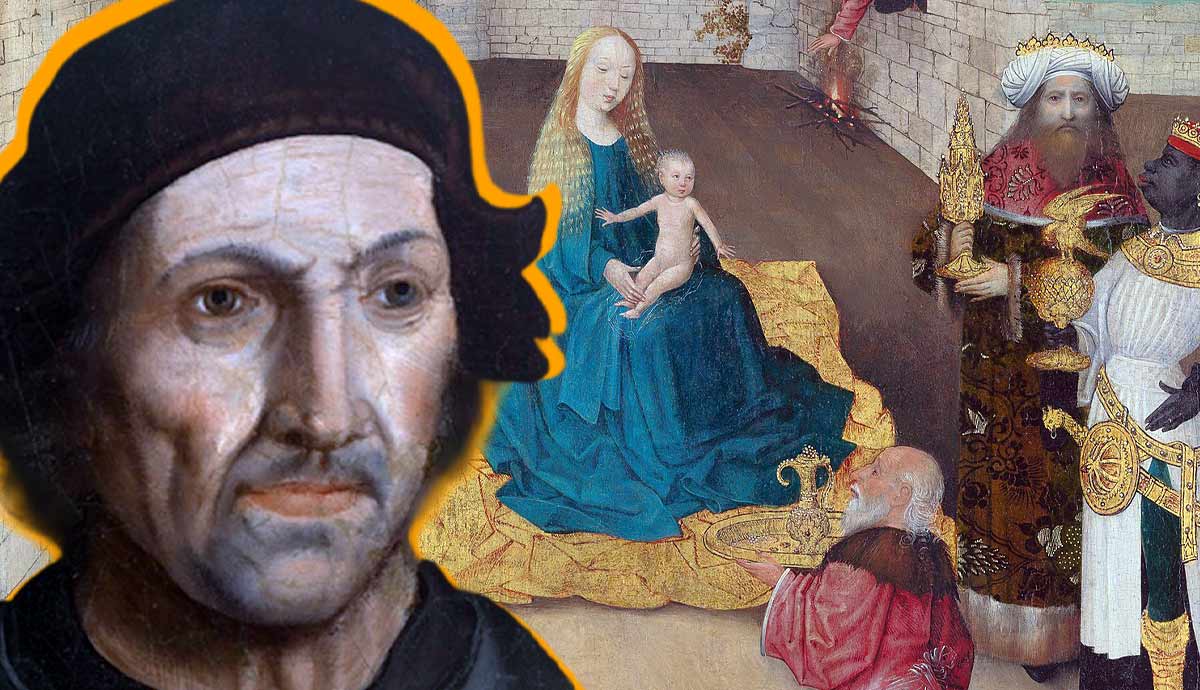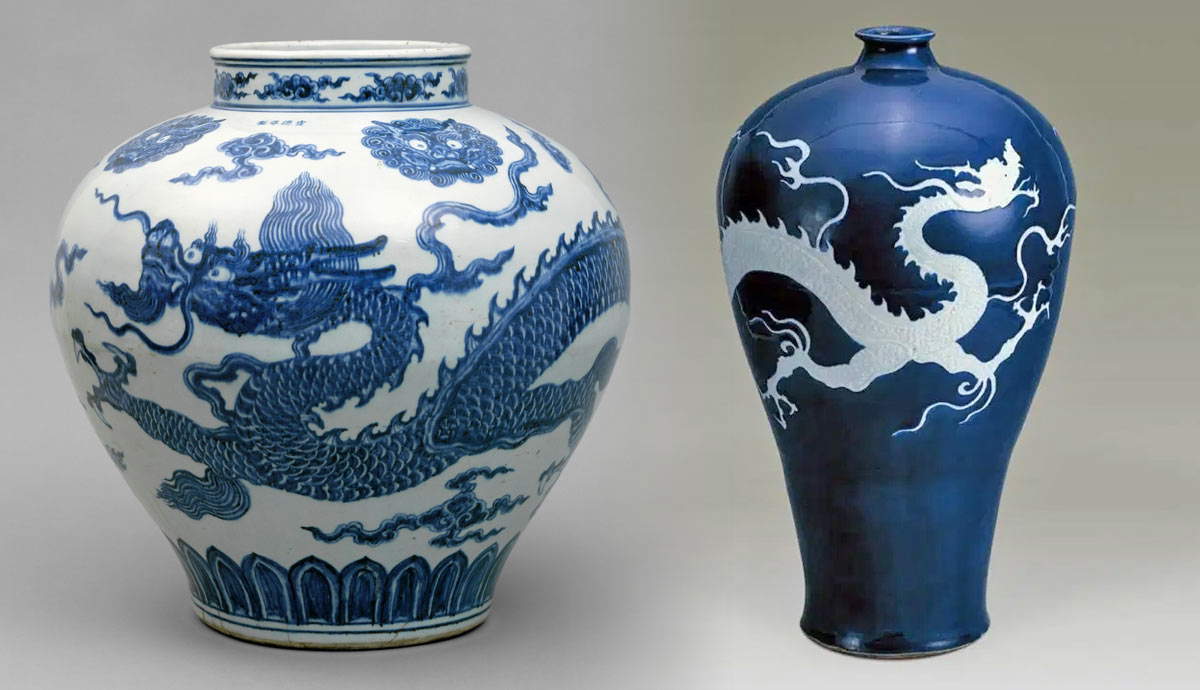
Donatello, born Donato di Niccolò di Betto Bardi, was one of the most outstanding sculptors of the Italian Renaissance. He was the frontrunner in reviving the art of Antiquity, and he was interested in Roman art and archaeology long before his contemporaries. Read on to learn more about Donatello and his most outstanding works. Here are nine pieces made by Donatello that you absolutely need to know!
1. Saint Mark: An Early Work by Donatello

Donatello was born in the late 1380s into a family of a Florentine wool merchant. His lack of noble origins was compensated by the financial stability, and the boy had a chance to study at a local goldsmith. In his workshop, he befriended another apprentice who was ten years older. This was Filippo Brunelleschi, another future great architect who was often credited with inventing linear perspective. They developed a close friendship for years. Still, Donatello’s first record in historical sources was hardly impressive: in 1401, he was tried and convicted for attacking an unnamed German with a stick.
For several years, Donatello and Brunelleschi worked as goldsmiths, gradually building their reputation. By the 1410s, Donatello started to receive major commissions. One of them was the sculpture of Saint Mark commissioned by one of the Florentine churches. The figure, noted for its unprecedented realism, cemented Donatello’s reputation.
2. The Feast of Herod

Together with Brunelleschi, Donatello was one of the pioneers of archaeology and was interested in Roman antiquities. In 1402, they went together from Florence to Rome to study the remaining ruins and sculptures. The trip itself was far from a present-day tourist voyage since the Italian city-states were constantly fighting with each other, making travel dangerous. Rome at the time was filled with neglected ancient remains. The famous Roman Forum was utilized as a place for grazing cattle. According to some sources, the locals once mistook Donatello and Brunelleschi for thieves hiding stolen treasures in ruins and nearly killed them.
Donatello’s interest in Antique art is reflected in his works, specifically in the compositions of his sculptures and bronze reliefs. The Feast of Herod was Donatello’s first bronze relief. The relief, telling the story of John the Baptist’s martyrdom, combined Brunelleschi’s innovation in perspective with antique stylistic tradition.
3. David

The famous sculpture of the Old Testament hero David was most likely commissioned by the Medici family. A young boy proudly puts his foot on the head of the defeated giant Goliath, yet with a hint of confusion, as if unsure what to do next. Art historians usually regard it as the first freestanding nude sculpture created since Roman Antiquity.
A conversation on Donatello’s David inevitably leads to the sculpture’s comparison with the famous work by Michelangelo, completed sixty years later. The latter sculptor, known for his use of the human body as the principal expressive means, chose to represent the hero as a fit and outstandingly beautiful figure. Donatello, however, approached the Biblical text a bit more literally, keeping in mind that David was described as a young shepherd boy. The triumph of his small and thin figure thus becomes even more outstanding, calling for praise and celebration.
4. San Rossore Reliquary

The gilded bronze bust was created to house the skull that supposedly belonged to Saint Luxurius (popularly known as San Rossore), who died in the third century CE. Luxurius was a Sardinian Roman official who converted to Christianity and was later killed for refusing to make sacrifices to Roman gods. According to the legend, Luxurius discovered the Old and the New Testaments during his work as a governor’s assistant and started reading them out of curiosity. Unexpectedly impressed, he soon converted and had no doubts about sacrificing his life for his faith. The time gap between Saint Luxurius and Donatello suggested that the image could possibly not bear any realistic likeness. Still, the detailed face of the sculpture leads many experts to the conclusion that Donatello had a model for it or possibly even depicted himself.
5. Equestrian Statue of Gattamelata

Many Renaissance works of art reflected the scientific conventions of the time, and Donatello’s creations were no exception. One such work was the sculpture of Erasmo of Narni, widely known under the nickname Gattamelata, a military leader and the chief magistrate of Padua.
While creating the sculptural portrait, Donatello hardly felt the need to work on the exact photographic likeness of his subject. His primary preoccupation was the type of character he wanted to represent. At the time, the pseudo-science of physiognomy made the core of the Renaissance understanding of human nature and character.
The proponents of the discipline believed that the traits of one’s soul and mind reflected in their visual appearance. Mostly, these visual traits were connected to types of animals and their behavioral characteristics. Thus, the portrait of Gattamelata had his face modeled from a wild cat—both due to his nickname (Gatta, meaning cat from Italian) and his cunning and ruthless character.
6. The Ascension with Christ Giving the Keys to Saint Peter

Another interpretative innovation of Donatello’s can be seen in his marble relief, which was created again for the Medici family. Attempting to achieve maximum compositional and expressive variety, Donatello united two scenes from the Bible that were usually depicted separately: the ascension of Christ to heaven 40 days after his resurrection and the act of passing the keys to the Kingdom of God to Saint Peter the Apostle. Peter, according to the story, then became the first Pope, founding the palace as an institute representing God and Jesus on earth.
According to Donatello’s contemporaries, although his works were well-paid and in high demand, he lived frugally and paid little attention to money. Allegedly, he kept the earnings from his commission in a small basket in his studio so that any of his friends and assistants could take some if they needed without asking.
7. The Penitent Magdalene

Despite working only with sculpture, Donatello was a versatile master, capable of mastering various materials, including marble, bronze, clay, wax, and wood. One of his most expressive works, which looks strangely modern, was The Penitent Magdalene, carved from white poplar wood.
The life-sized figure by Donatello broke from the tradition of depicting Mary Magdalene, who denounced her sinful life and came to Jesus as a healthy and beautiful young woman. According to the Bible story, she spent thirty years in the desert repenting her sins, and Donatello depicted her exactly in that way—famished, exhausted, and dressed in rags. Such iconography was more typical for Orthodox Christianity and was likely borrowed by the sculptor from external sources.
8. John the Baptist

The stylistic twin to the Penitent Magdalene, the figure of John the Baptist, appeared in Donatello’s oeuvre slightly earlier. However, Donatello’s figure was realistically painted, with the texture of wood covered with lacquer. Both sculptures’ features were unusually expressive, similar either to the late-Medieval German art or to Expressionist experiments five centuries later.
According to some historical accounts, Donatello was what we now perceive as agnostic, critical to the Scripture and its human interpretations. Still, the majority of the commissions he executed came from the Catholic Church since they were the principal patrons of art in his era. Perhaps Donatello’s critical stance allowed him to make unusual decisions for his compositions that lay outside the existing canons and traditions.
9. Judith and Holofernes: Donatello’s Final Period

Created during the last period of Donatello’s career, Judith and Holofernes still managed to impress the Medicis, who were well-familiar with what the sculptor was capable of. Another Old Testament heroine, Judith, was a young Jewish widow who seduced the enemy leader Holofernes only to cut off his head when he drunkenly fell asleep. The image of Judith lived through a strange transformation over the centuries in Western culture. Praised as a pure patriotic heroine, by the 18th and 19th centuries, she became synonymous with feminine slyness and treachery. In some works, her image became fused with the one of Salome, who ordered the beheading of John the Baptist.
According to many Donatello experts, in the last years of his life, the sculptor felt tired and out of place. After years in Rome and Padua, he came back to Florence only to find out that the local preferences for art changed, and he was not as eagerly welcomed as before. Judith and Holofernes was one of the works completed shortly before the sculptor’s death. He was too weak to work entirely on his own, so he relied on his assistants. Donatello died in 1466 and was buried by the Medici family members as a sign of great respect.










